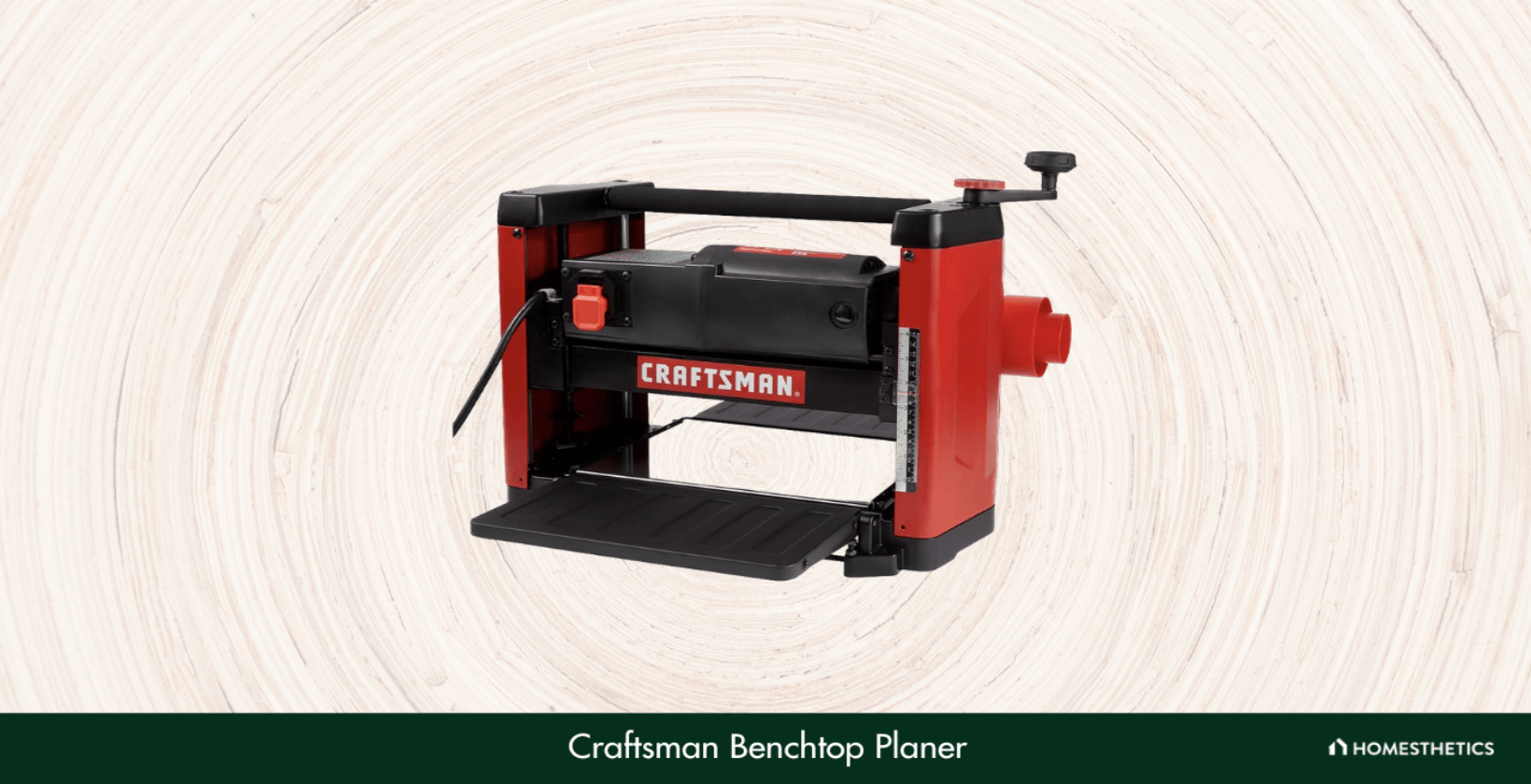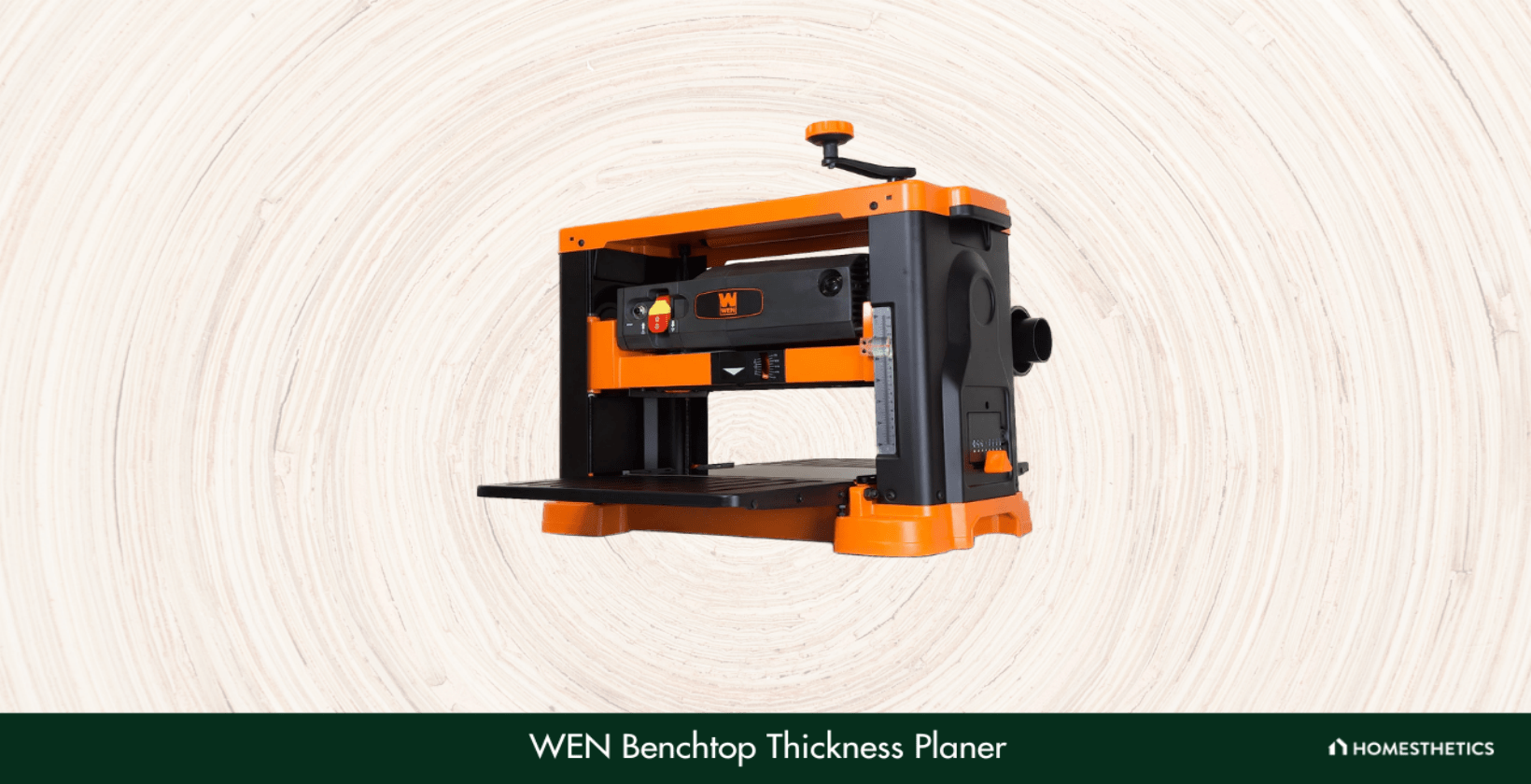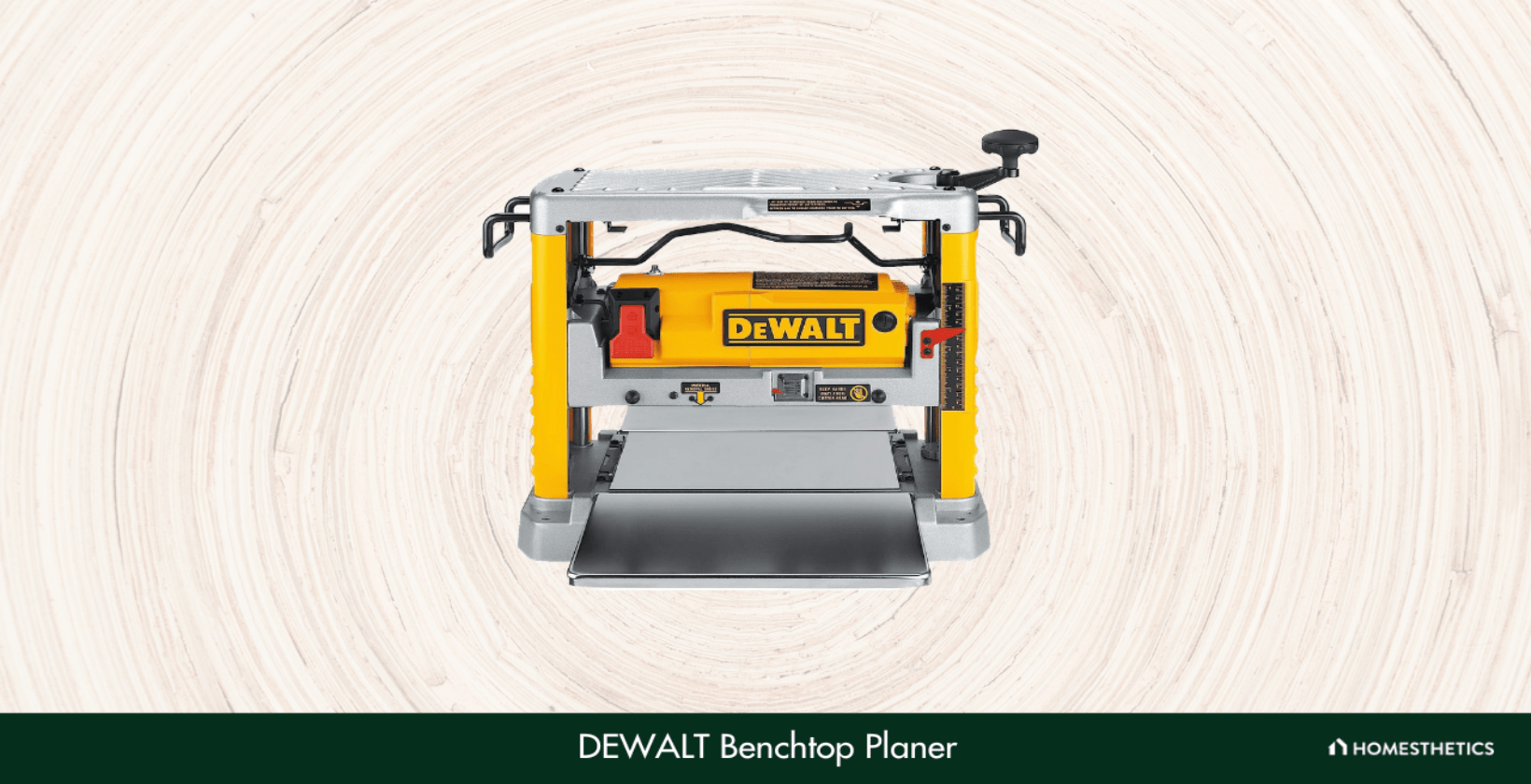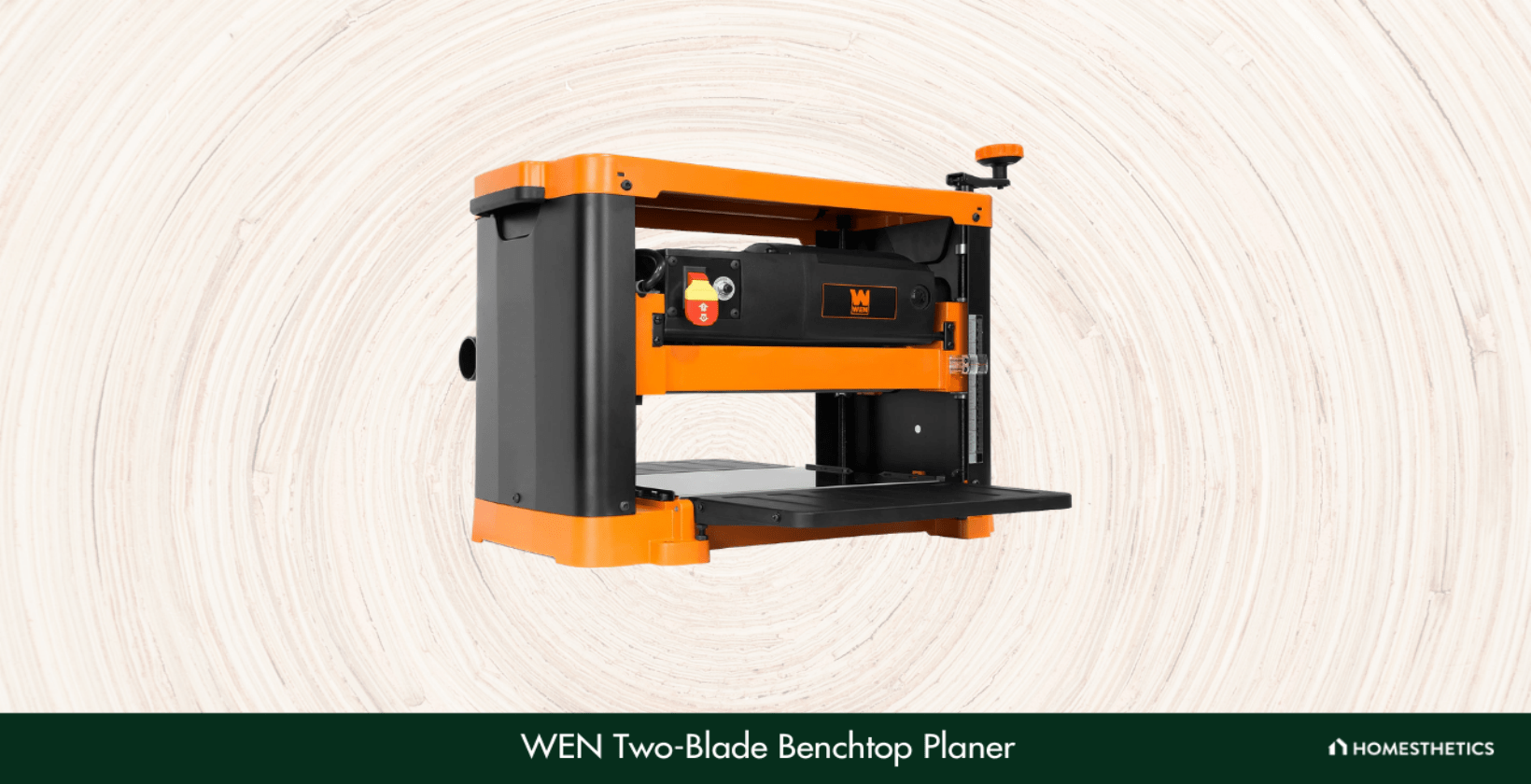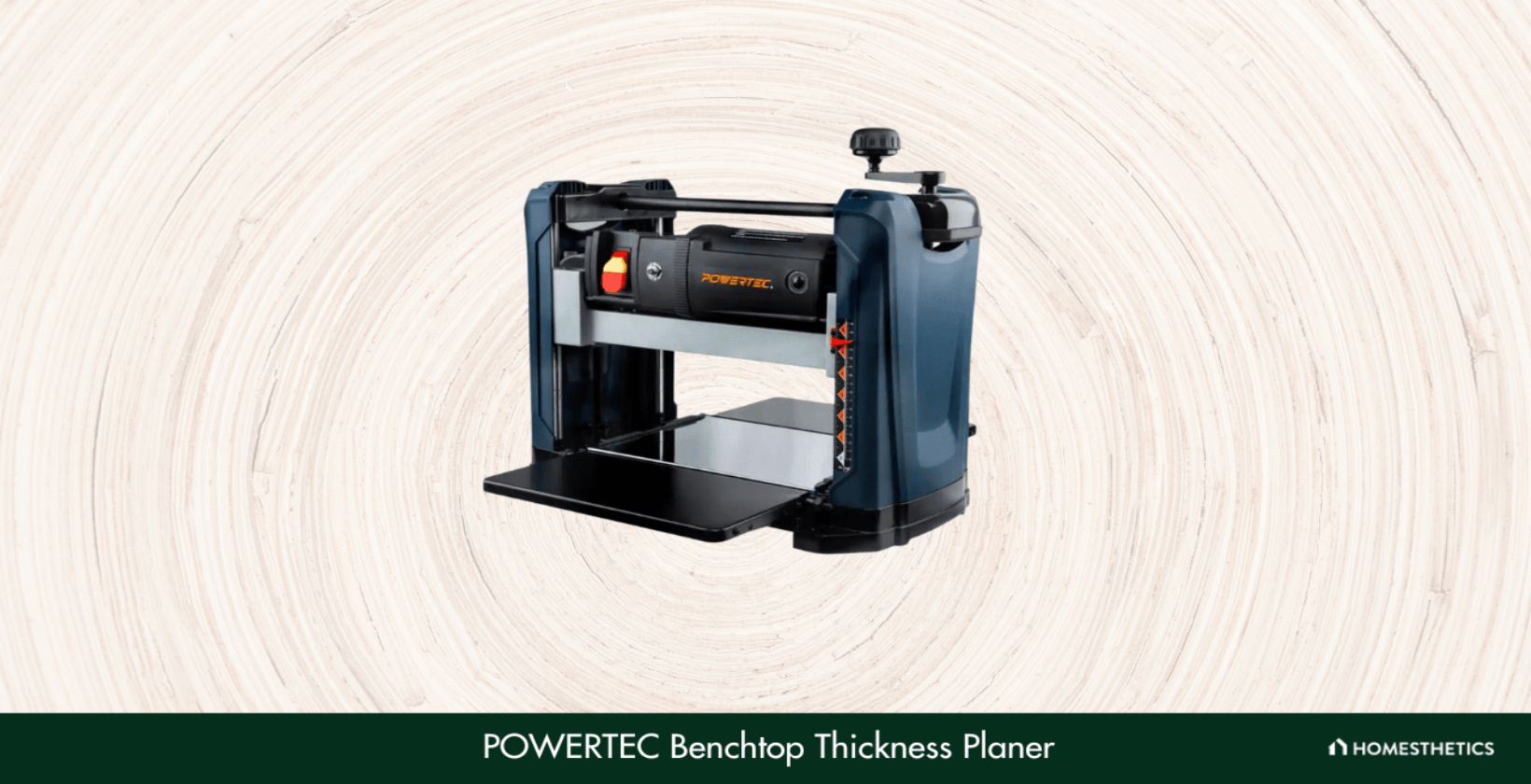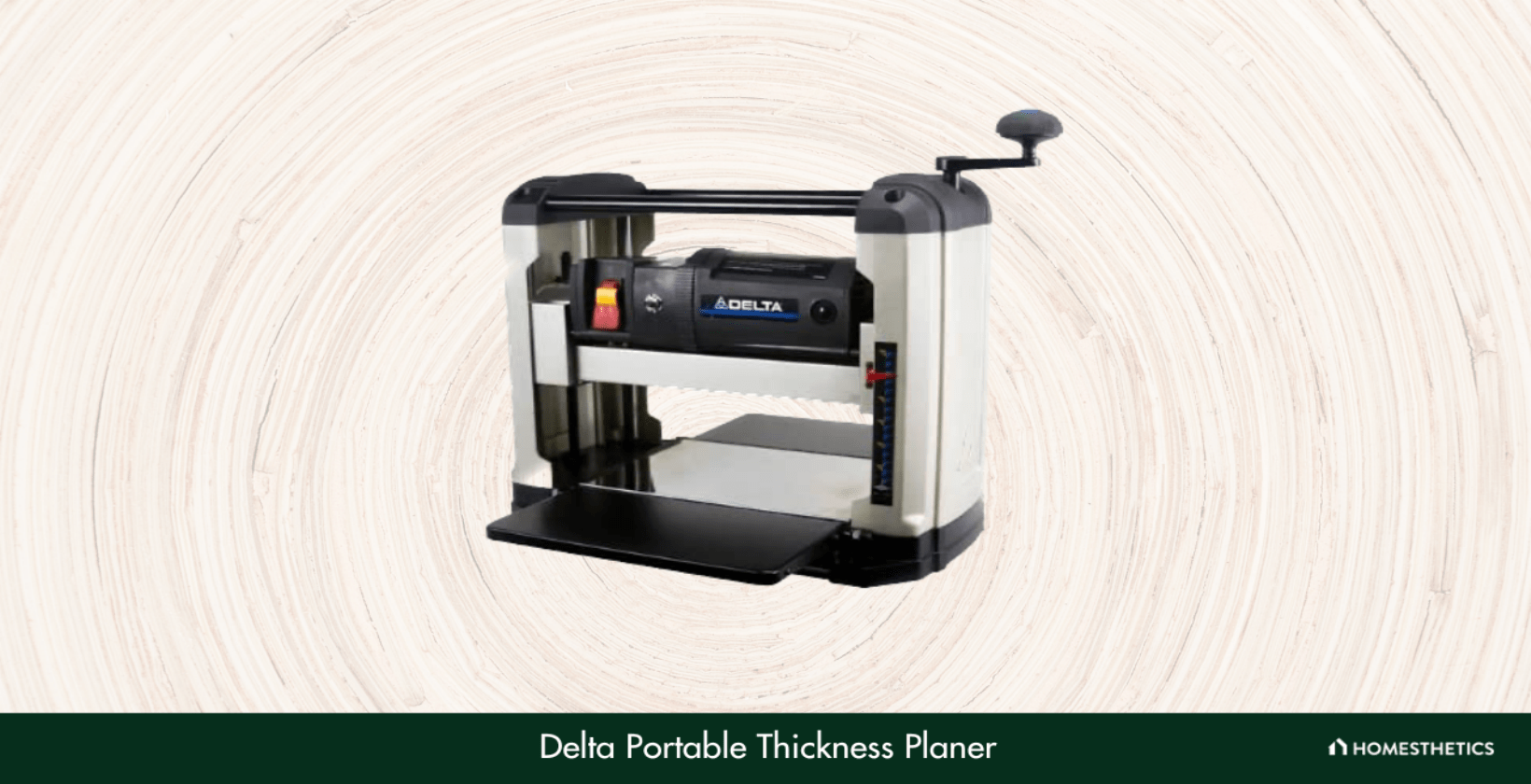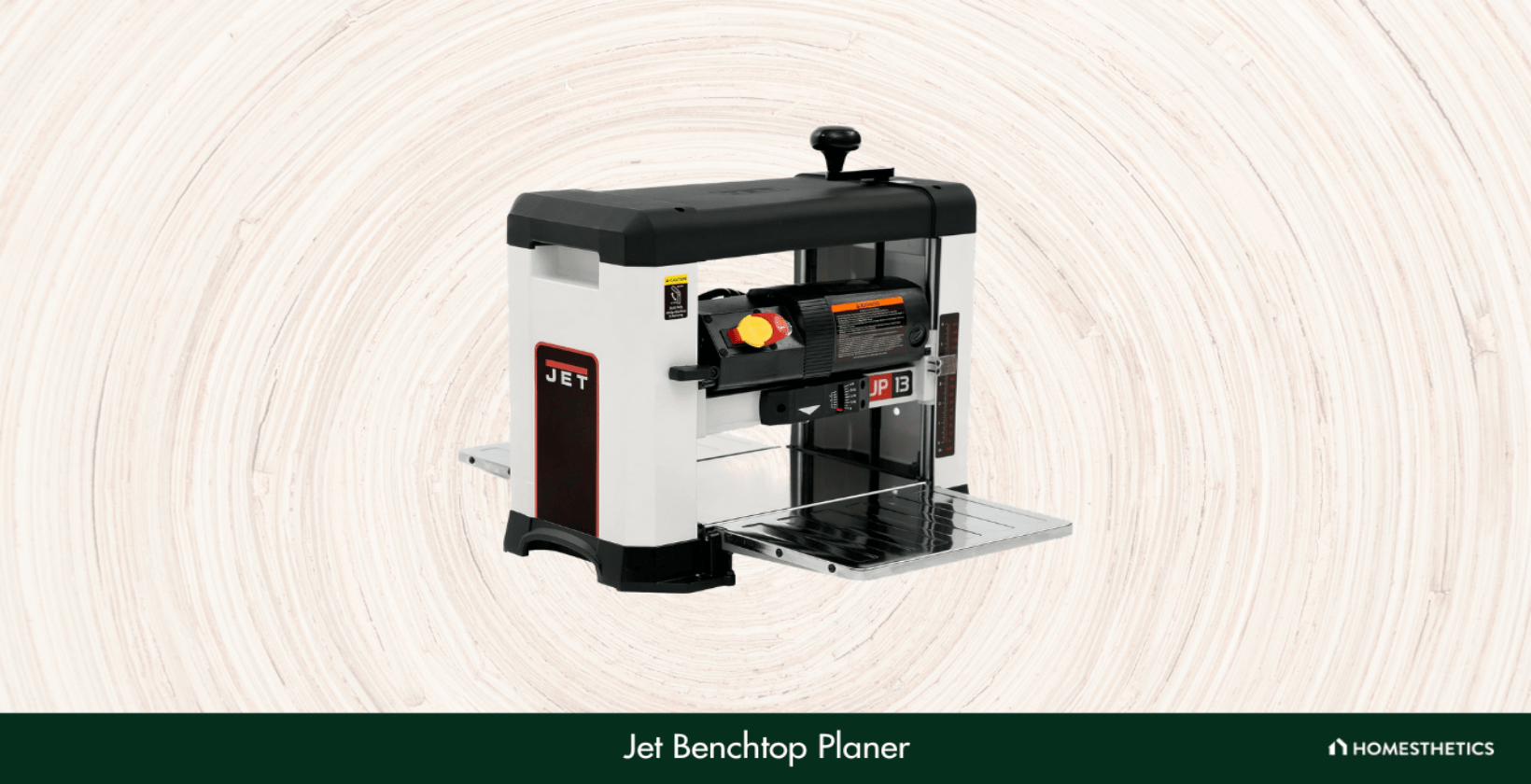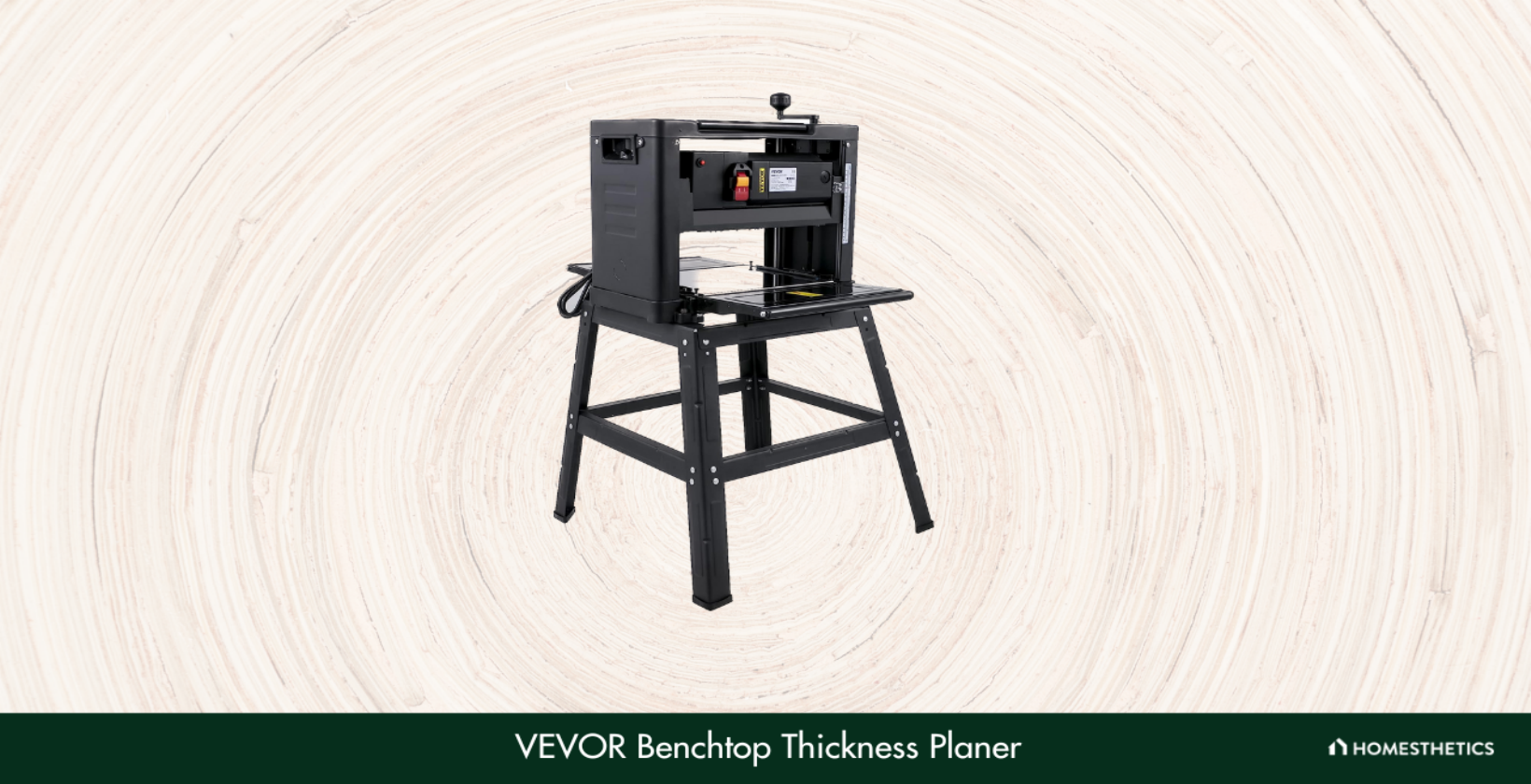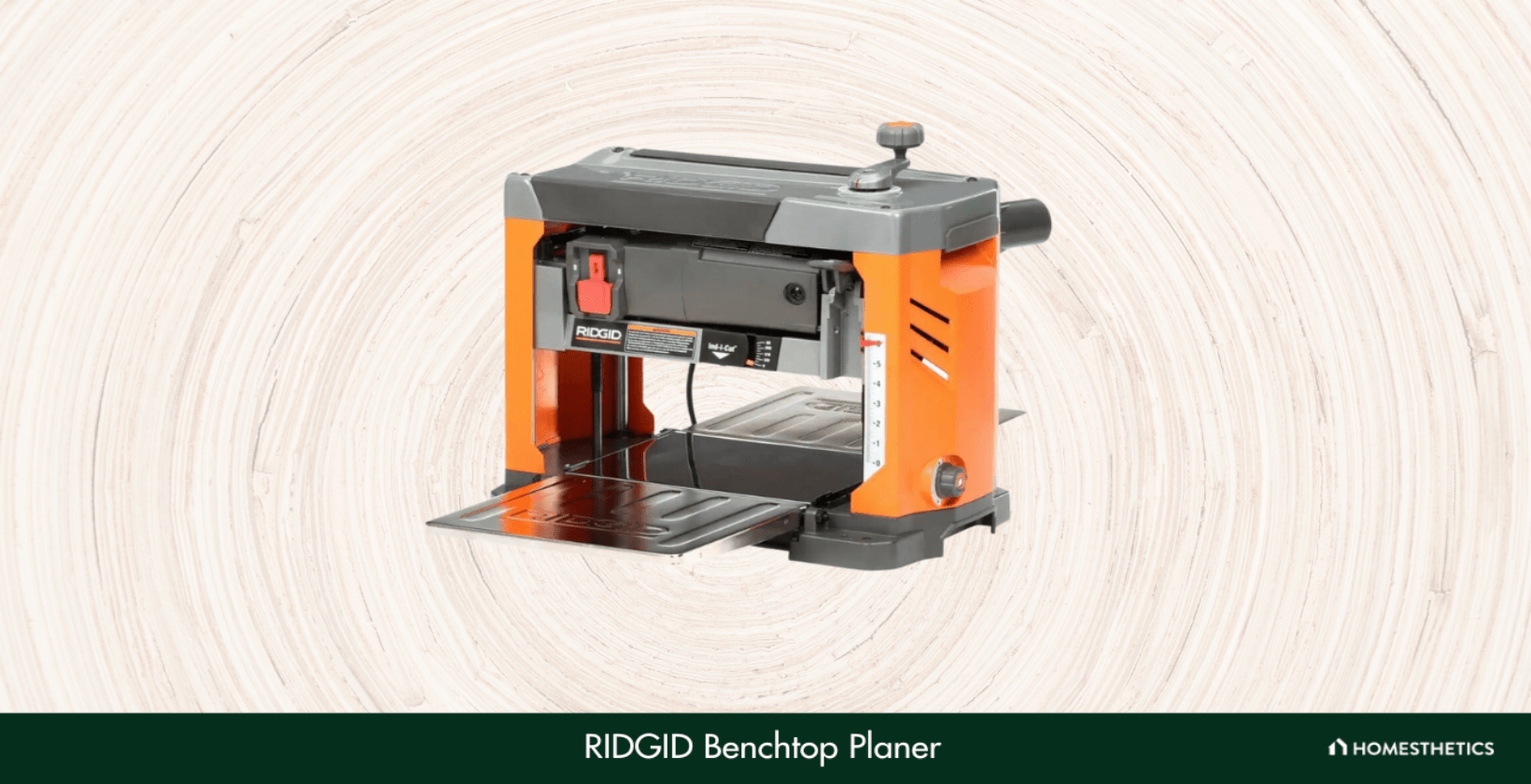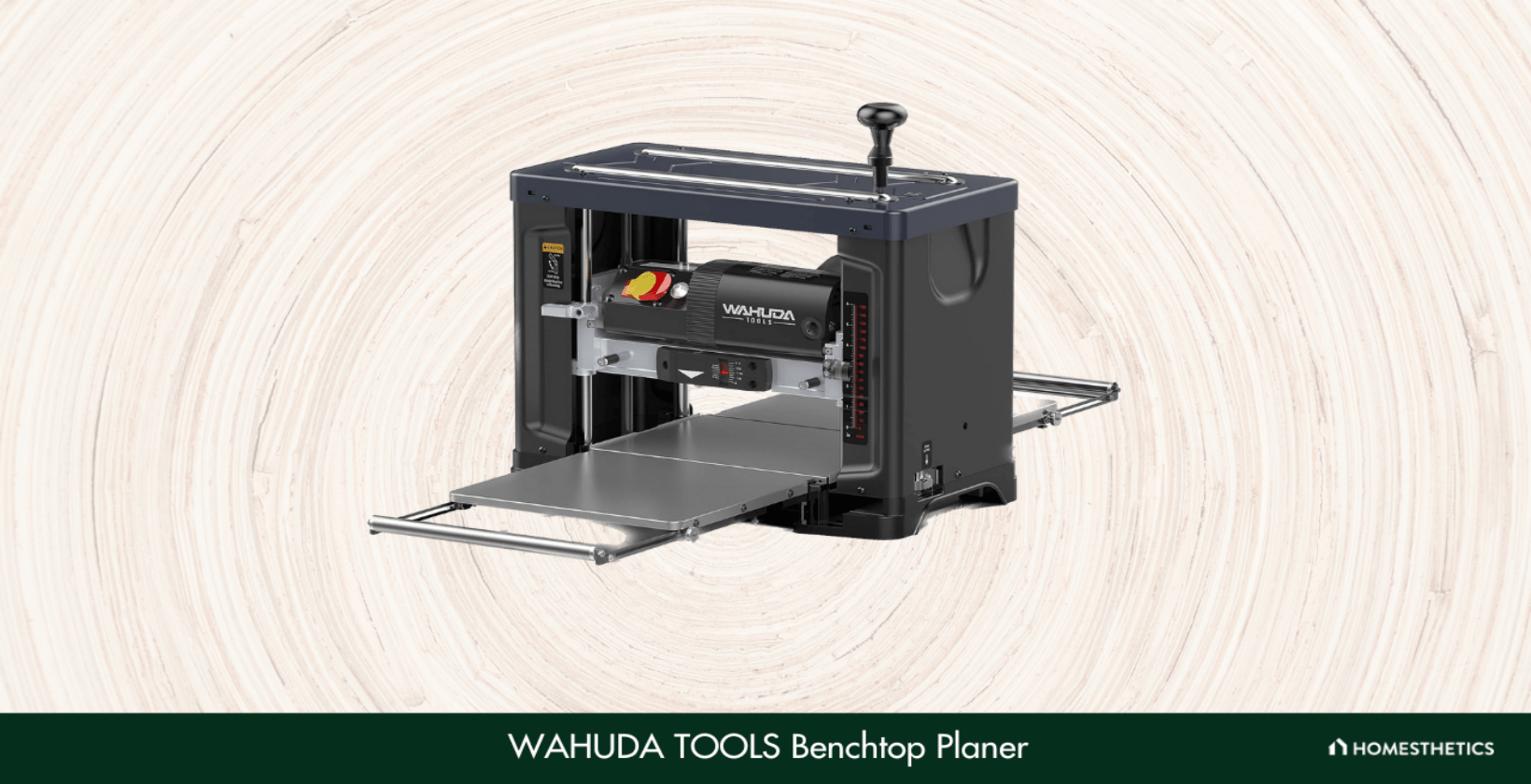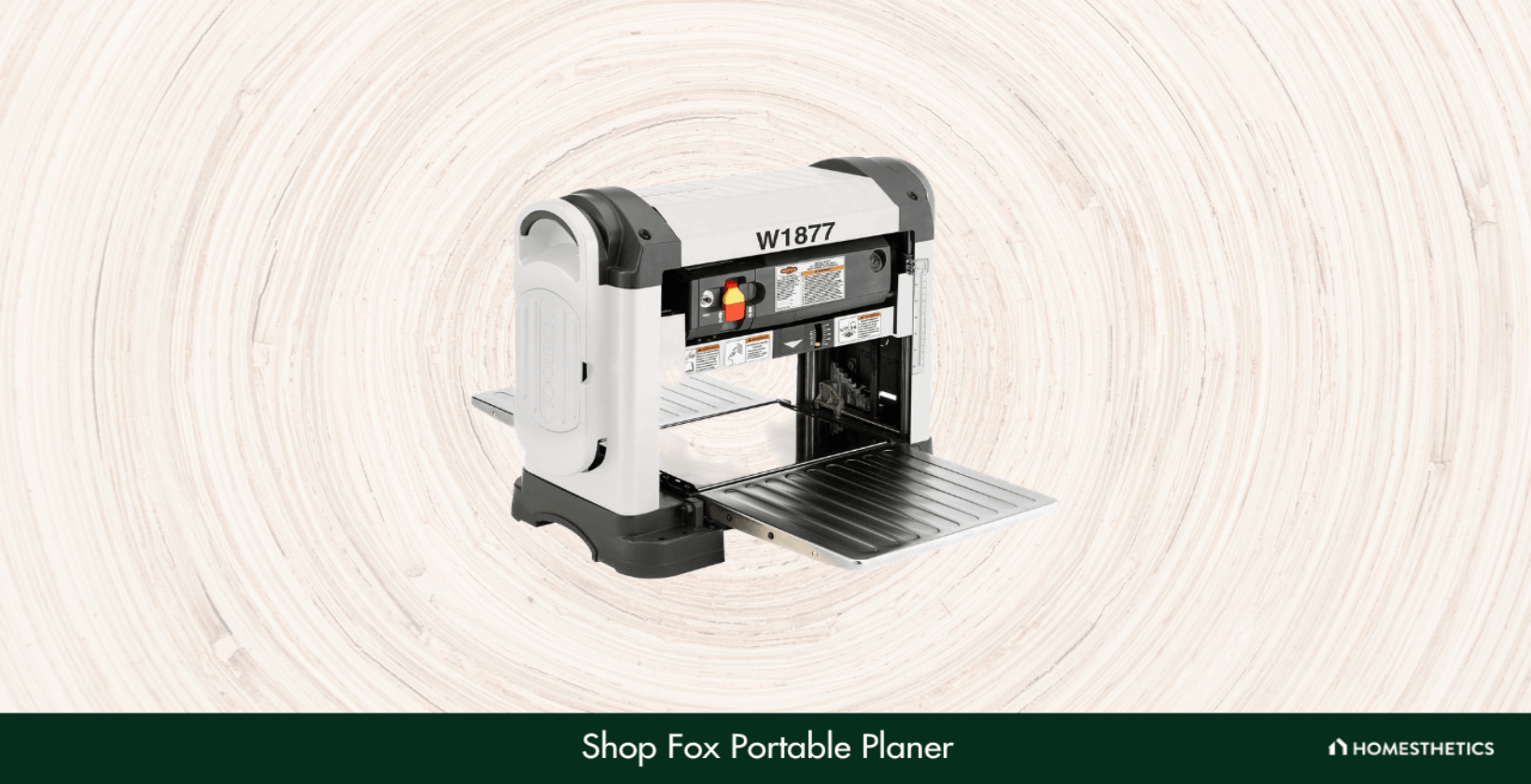The best benchtop planers, also known as benchtop thickness planers or portable thickness planers, are indispensable for woodworkers who need to achieve uniform thickness and smooth finishes across a wide variety of lumber types. These compact machines combine portability, precision, and cutting power, making them ideal for DIYers, cabinetmakers, and small workshop professionals. For example, the Craftsman benchtop planer features a 15-amp motor, dual-knife setup, and carbon steel construction, offering reliable performance and tool-free adjustments. Meanwhile, the WEN benchtop thickness planer uses 26 HSS blades for cleaner cuts and reduced snipe, thanks to its efficient spiral cutterhead design. With so many models differing in cutter type, feed speed, and material support, selecting the right planer can be overwhelming. This guide reviews 11 of the top-rated benchtop planers for performance, durability, ease of use, and value, helping you choose the perfect tool for smooth and consistent results in your next woodworking project.
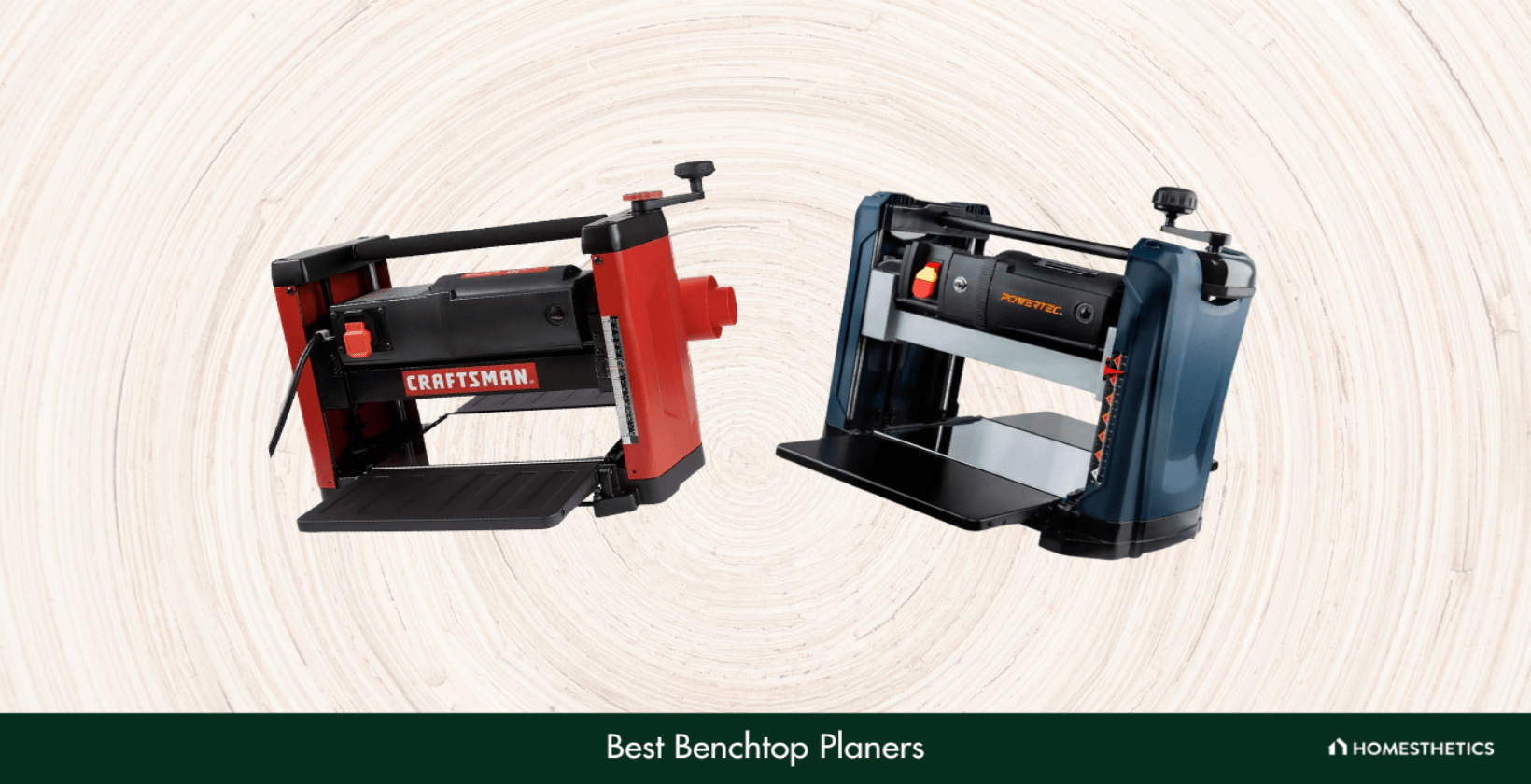
Listed below are the best benchtop planers for home woodworking projects:
- Craftsman benchtop planer: The Craftsman's 15-amp benchtop planer, with carbon steel construction, ensures powerful material removal. The two-knife cutterhead, featuring reversible blades, delivers efficiency. A 3-year warranty and a dust collection port enhance convenience.
- WEN benchtop thickness planer: The WEN's benchtop thickness planer, driven by a 15-amp motor, offers smooth performance with a spiral cutterhead. The 26 staggered HSS blades and adjustable dust port add versatility.
- DeWalt benchtop planer: The DeWalt's 15-amp benchtop planer excels with a three-knife cutterhead and 20,000 RPM motor. Extended tables, four-column carriage lock, and accurate gauges ensure precision.
- WEN two-blade benchtop planer: The WEN's 2-blade benchtop planer, powered by a 15-amp motor, provides clean cuts with depth control. Suitable for boards up to 12.5 inches wide, it offers value for money.
- POWERTEC benchtop thickness planer: The POWERTEC's 15-amp benchtop thickness planer, designed for old wooden surfaces, ensures efficiency. Side-mounted handles, stainless steel cutterhead, and EZ blade replacement enhance usability.
1. Craftsman benchtop planer - Best two-knife benchtop planer
What We Like
- High-quality construction
- Easy to adjust
- 3-year warranty
- Value for money
What We Don't Like
- Infeed and outfeed tables need adjustments
Designed for removing unwanted material from hardwood and softwood, the Craftsman planer is a powerful machine with carbon steel construction and a 15-ampere electric motor.
For cutting through wood, the planer has a solid steel cutterhead, under which lie ball bearings, allowing it to operate smoothly. The cutterhead features a two-knife design and can be adjusted according to your needs. Plus, making height and depth adjustments is quite simple and takes little time.
Apart from providing a better experience, this construction helps the benchtop thickness planer last for a considerable period. As for the blades, these are double-edged knives, reversible, and made of high-carbon steel, which provides more efficient cutting than a table saw, while being durable.
Then, there is the Poly-V cutterhead drive, which, as indicated by my tests, can quickly remove a large amount of material, providing a finished surface.
I also liked that this Craftsman planer comes with a dust collection port that makes it incredibly easy to get rid of wood dust while working without using a vacuum. And the manufacturer provides a 3-year limited warranty, which means returns and replacements will be hassle-free.
2. WEN benchtop thickness planer - Best option with adjustable dust port
What We Like
- Easy assembly
- Smooth performance
- Easily replaceable blades
- Reasonably priced
What We Don't Like
- Short power cord
This single-speed wood planer with a spiral cutterhead has 26 staggered HSS blades that allow smooth and clean cutting.
The base of the WEN benchtop planer is constructed using cast iron, which provides it with unmatched durability. So, you can rest assured that it won't get damaged easily and can last long. There is also a material removal gauge onboard that makes it easy to know about the cutting depth with each pass, ensuring uniformity and consistency.
Apart from that, you can use this benchtop planer to plane boards with a thickness of up to 6 inches and a width of up to 13 inches. The 15-amp motor is powerful enough for most cutting requirements and generates 10,000 RPM (revolutions per minute) at a feed rate of 26 feet per minute.
After putting it to the test, I discovered that this allows you to work very quickly, helping save a lot of time. This may not be possible with other options, like the Makita planer, while you even get a depth stop and an adjustable dust port.
Since this is a corded electric planer instead of a battery-powered one, you do not need to worry about the battery dying unexpectedly while in the middle of a job.
3. DeWalt benchtop planer - Best planer with reversible knives
What We Like
- Accurate
- Powerful motor
- Disposable knives
- Durable
What We Don't Like
- A bit expensive
Several features make the DeWalt benchtop planer a worthwhile option, such as its powerful 15-amp motor, three-knife cutterhead, and four-column carriage lock. The 15-amp motor has an RPM of 20,000, which allows this thickness planer to make deep, large cuts efficiently and ensures it’s ideal for hardwoods and softer woods.
Similarly, the three-knife cutterhead has a 10,000 RPM cutterhead speed, because of which you can make 96 cuts per inch of the wooden surface. So, it is one of the best portable thickness planers currently available, while the knives are reversible, disposable, and can be changed quickly with minimal effort.
They are also well-built and extremely durable, but the feature I liked most about this benchtop thickness planer is its 4-column carriage lock. This is very handy in preventing wood sniping since it reduces movement while working.
Also, when I tried this product, I discovered that the infeed and outfeed tables are quite long and provide 33-½ inches of support to the material. Because of this, using the DeWalt planer is quite easy and does not require making too many adjustments.
To ensure consistency while planing, the DeWalt benchtop thickness planer has an extra-large thickness scale and a material removal gauge. So, you can rest assured that any cuts made using the planer will be highly accurate, and the turret depth-stop allows returning to the most frequently used depths quickly.
4. WEN two-blade benchtop planer - Best planer with 12-amp motor
What We Like
- Precise and clean performance
- Battery-free option
- Easily replaceable blades
- Value for money
What We Don't Like
- The exhaust port tends to clog up
Another option from WEN that's worth considering is the 2-blade benchtop thickness planer, which features reversible blades, delivers solid performance, and is available at a decent price on Amazon. This benchtop thickness planer is designed for planing boards up to 12.5 inches wide and up to 6 inches thick.
It has a 15-amp motor that generates 20,000 cuts per minute and has a feed rate of 26 feet per minute. Because of this, planing wood is fast and effortless, and this tool is a fantastic option if you work in the furniture manufacturing industry.
Also, I have found from using this product that you can easily adjust the cutting depth from 0 to ⅛ of an inch with different passes. The two reversible 12.5-inch SK5 blades perform clean cuts, providing the countertop with a smooth surface and neat edges. So, how thick or thin a wooden surface needs to be can be controlled without any hassle.
The WEN two-blade benchtop planer is a corded option that must be plugged into a power outlet and does not rely on batteries. Hence, assembling and using the planner does not require any technical skill or expertise.
As for changing the blades when they become dull, you simply need to remove the screws on the dust collector and blade cover to push down the cutterhead. This means that installing new blades won't be troublesome when the old ones become useless.
5. POWERTEC benchtop thickness planer - Best with side-mounted handles
What We Like
- Sturdy construction
- Suitable for professional and hobby purposes
- Easy blade replacement system
- One-year warranty
What We Don't Like
- A bit noisy
Now I'll be reviewing the POWERTEC benchtop thickness planer, which has been specially designed for repurposing old wooden surfaces. It is another one of the corded electric benchtop thickness planers on this list, and its 15-amp motor makes it suitable for professional and DIY carpentry projects.
The planner has an anti-wobble, heavy-duty base that provides exceptional sturdiness to the tool and allows it to easily support several boards of different types. After trying out this product, I found that it can easily be used for boards up to six inches thick and up to 12.5 inches wide.
Performance is also remarkable, thanks to the 15-amp, two-horsepower motor, which features an innovative two-blade cutting design. This makes the wood planer ideal for working on all types of wood, including walnut lumber, pallet wood, pine, maple, and raw oak. In addition, there are side-mounted handles that make carrying the planer very easy.
The cutterhead is constructed using stainless steel and has an RPM of 9,400, which allows it to deliver 18,800 cuts per minute. This helps reduce snipe while providing an extremely smooth planing experience and helping you work faster.
And that's not all, as the POWERTEC wood planer comes with an EZ blade replacement system comprising an index pin setup. There is also a spindle lock that ensures complete safety while changing the blade. And you even get a one-year limited manufacturer warranty, which makes getting refunds or replacements easy.
6. Delta portable thickness planer - Best option with polyurethane feed rollers
What We Like
- Smooth and stable performance
- Easy-to-replace knives
- Efficient dust port
- Supports long pieces
What We Don't Like
- Plastic gears
With its powerful motor, quick-change knife system, and four-column design, this offering from Delta is one of the best portable thickness planers I've come across. Its 15-amp motor is powerful enough to handle most planing tasks easily, resulting in the smoothest surfaces.
This is further enhanced by the four-column design, which provides stability to the benchtop planer while it is being used. Greater stability also results in more accurate results when shaping wood, and you can even use this thickness planer for professional work.
Coming to the quick-change knife system, this comprises dual-edge disposable knives that can be changed easily without relying on any complicated setup, unlike those found on competing benchtop models. Similarly, the infeed and outfeed tables can be adjusted quickly to support longer boards, preventing problems like planer snipe.
Another noteworthy feature of this benchtop wood planer is its reversible dust port, which does a good job of collecting dust and chips from the sides of the planer. As I experienced it first-hand in action, I can say that it is very helpful in reducing the time and effort required to clean up after finishing the job.
Then, there are the two polyurethane feed rollers that provide a sturdy grip on the workpiece, preventing it from slipping while you work. These are located near the cutterhead and help improve the finish of the workpiece and provide it with a more attractive appearance.
7. Jet benchtop planer - Best wood planer with helical-style cutterhead
What We Like
- Heavy-duty construction
- Efficient performance
- Easily changeable blades
- Suitable for all lumber types
What We Don't Like
- Not the best for very large projects
Moving on to the next item on this list, I bring you the Jet benchtop planer, which sets itself apart from the competition with its helical-style cutterhead. This cutterhead provides very clean cuts and supports easy-to-change blades, improving the user experience.
For stability, this benchtop planer has a steel cover and a cast iron bed that is precision machined. These help keep the boards flat while working, so you can cut quickly and easily without damaging the surface. So, you can rest assured that planing issues like snipe are very unlikely when using this powerful tool.
Another reason why the planing process is so smooth with the Jet benchtop planer is because it is powered by a 15-amp motor. It can turn the cutterhead at 10,000 RPM and, based on my observations, does an excellent job of ensuring smooth workflows regardless of the lumber you are using.
There is also dual infeed speed control that can run at 18 or 26 FPM, ensuring maximum efficiency while working on different types of wood. This allows you to use the benchtop planer on both hardwood and softwood boards without any worries.
And like the best benchtop thickness planers, this one from Jet features a four-post design that provides superb control and support to the cutterhead. Because of this design, the workpiece and cast table will stay in position, ensuring a high level of precision and the best cut quality.
8. VEVOR benchtop thickness planer - Best option with an electromagnetic switch
What We Like
- Durable
- Wide application
- Easy to use
- Safety features
What We Don't Like
- Instructions not very clear
If you're looking for a heavy-duty option, the VEVOR wood planer is among the best benchtop thickness planers for that purpose. It is a 2000W benchtop planer with two pieces of double cutter blades, a steel floor stand, and a metal workbench.
You can use this thickness planer for pieces as wide as 12.5 inches and as thick as six inches without breaking a sweat. This is thanks to the blade, which has a feeding speed of 236 inches per minute and a blade speed with an RPM of 8,000.
Also, after giving it a go, I found that adjusting the height of the cutting head on this thickness planer is incredibly easy due to its crank handle. Besides that, this thickness planer comes with a scale ruler that ensures a high level of precision when shaping wood.
Moving the planer across the wooden surface is also quite easy and comfortable due to the grooves present on the sides. And the wood planer is available in an automatic feeding design, which eliminates the effort required to feed the materials.
Another thing that should be highlighted here is that the VEVOR benchtop planer features a power-off protection electromagnetic switch. This trips the over-current protector if the motor becomes overloaded, ensuring complete safety and stable operation while using the thickness planer and adding to its durability.
And you can even use this versatile planer for lining nylon and planing bamboo.
9. RIDGID benchtop planer - Best benchtop planer with carriage lock
What We Like
- Smooth performance
- Easy adjustments
- Large infeed and outfeed table extensions
- Reasonable price
What We Don't Like
- Plastic components
The RIDGID 13-inch corded benchtop planer is one of the highest-rated options currently available in the United States. Like other thickness planers mentioned here, it has a 15-amp motor that moves the blade at 9,000 RPM for quick and clean cuts.
In addition, you get eight adjustable cutting stops at the most commonly used depths, making it easy to switch to them when working. Then, there is the three-blade cutterhead, which is present along with dual-edge cutting blades that can be changed quickly without hassle.
After seeing it in action, I was convinced that this cutterhead works flawlessly to deliver a smooth finish on almost any type of wood. But I found the advanced chip and dust removal system equally impressive since it uses inbuilt fans to remove the sawdust and woodchips. This also helps prevent the benchtop planer motor from clogging and disrupting the workflow.
For better support, the RIDGID benchtop planer comes with large table extensions, and the power tool even has a SURE-CUT automatic carriage lock that helps prevent snipes. This is one feature you won't find on most benchtop planers, making the RIDGID one a highly compelling choice.
Moving the wood planer across workpieces is very simple, thanks to the top-mounted handle, which is adjustable and easy to reach. And the steel top is extremely wide, which helps prepare the material before cutting, and you can measure the depth using the Ind-I-Cut depth gauge.
10. WAHUDA TOOLS benchtop planer - Best with changeable inserts
What We Like
- Dual cutting speeds
- Easily replaceable inserts
- Reliable performance
- Lightweight
What We Don't Like
- Uncomfortably large plug
Featuring a spiral cutterhead and two cutting speeds, the WAHUDA TOOLS is another benchtop planer worth taking a look at. Depending on the type of wood to be used and your project requirements, you can choose between a faster 26 FPM and a slower 18 FPM speed.
The faster speed can be used to ensure consistent thickness, while the slower one allows you to get a smoother surface finish. Coming to the cutterhead, this has a spiral design and four-sided tungsten carbide inserts that can be rotated or replaced when they lose their sharpness.
My analysis of this product revealed that installing these inserts is not very complicated, and they are also quite cost-effective, which means maintenance is simple as well. As for the overall performance of the WAHUDA TOOLS benchtop planer, it is quite impressive as the woodworking tool relies on a 15-amp motor that is quite powerful.
Apart from that, this benchtop planer comes with easily adjustable extensions and tables, and even has table pull-out extensions that provide adequate support even for longer workpieces. This ensures stability and allows you to work more smoothly with minimal vibration.
And if you need to change the depth in the middle of a project quickly, this jig has an eight-position preset depth stop for the purpose. Lastly, this planer weighs just 77 pounds, making it one of the best portable planers currently available on the market.
11. Shop Fox portable planer - Best wood planer with thickness scale
What We Like
- Easy to use
- Well-built
- Efficient design
- Two-year warranty
What We Don't Like
- A dust port can leak
Shop Fox specializes in woodworking tools, such as jointers, planers, sanders, etc., and this portable plane is an extremely popular offering from the brand. It features a 15-amp motor that allows the planer to be used for boards as wide as 13 inches and as thick as six inches.
The maximum depth of cut provided by this thickness planer is ⅛ inches, which is more than enough for most professional and do-it-yourself projects. Aside from that, this is another one of the benchtop planers with a spiral-style cutterhead, and it supports 26 inserts for easy woodworking.
You also get a 10,000 RPM cutterhead speed on this thickness planer, which means the effort and time required for planing wood will not be too much. This ease of use is further enhanced thanks to the feed rate of 26 FPM, which is quite impressive.
The Shop Fox thickness planer also features a dust collection system with a four-inch dust port that comes with a 2-½ inch adapter. After trying it in various situations, I found that this system works very well in collecting wood chips and dust, eliminating the need for a vacuum cleaner.
I also found the thickness scale on the top quite useful, making it easy to check your progress and ensure consistency while shaping wood. Last, but not least, this planer comes with a two-year manufacturer warranty, eliminating any concerns regarding replacements and refunds.
Which benchtop planer offers the best features for home improvement?
Discover a wealth of comparison details in the table below, offering insights into motor power, cutting capacities, cutterhead types, feed rate, snipe control, dust collection, and more. This information will empower you to make a well-informed choice when selecting the ideal benchtop planer for your home improvement ventures.
| Benchtop Planers | Motor Power | Maximum Cutting Width | Maximum Depth of Cut | Cutterhead Type and Speed | Number of Knives | Feed Rate | Snipe Control | Dust Collection |
|---|---|---|---|---|---|---|---|---|
| Craftsman Benchtop Planer | 15 amps | 12.25" | .125" | Two-knife, 8000 RPM | 2 | 26.2 SFPM | N/A | Vacuum port |
| WEN Benchtop Planer | 15 amps | 13" | .125" | Spiral, 10,000 RPM | 26 | 26 FPM | Height-adjustable infeed and outfeed tables to limit snipe | Adjustable dust port |
| DeWalt Benchtop Planer | 15 amps | 12.5" | .125" | Three-knife, 10,000 RPM | 3 | 18 FPM | 4-column carriage lock drastically reduces the movement that causes snipe | Dust hood |
| WEN Benchtop Planer | 15 amps | 12.5" | .125" | Two-blade | 2 | 26 FPM | Height-adjustable infeed and outfeed tables to limit snipe | Dust port |
| POWERTEC Benchtop Planer | 15 amps | 12.5" | .09" | Straight knife, 9400 RPM | 2 | N/A | N/A | N/A |
| Delta Portable Planer | 15 amps | 13" | .09" | Straight knife, 10,000 RPM | 2 | 28 FPM | Adjustable infeed and outfeed tables to better support long pieces and reduce snipe | Reversible dust port |
| Jet Benchtop Planer | 15 amps | 13" | .125" | Helical, 10,000 RPM | 24 | 18, 26 FPM | Precision-machined cast iron bed and steel cover to reduce board snipe | Dust hood |
| VEVOR Benchtop Planer | 15 amps, 2000W | 12.5" | .2" to 6" | Straight knife, 8,000 RPM | 2 | 19.67 FPM | N/A | Dust exhaust interface |
| RIDGID Benchtop Planer | 15 amps | 13" | .125" | Three-blade, 9000 RPM | 3 | N/A | SURE-CUT carriage lock secures the cutterhead to minimize snipe | Advanced chip and dust removal system |
| WAHUDA TOOLS Benchtop Planer | 15 amps | 13" | .125" | Spiral, 23,000 RPM | 4 | 18, 26 FPM | N/A | 4" dust port, 2.5" adapter |
| Shop Fox Portable Planer | 15 amps | 13" | .125" | Spiral, 10,000 RPM | 26 | 26 FPM | N/A | 4" dust port, 2.5" adapter |
Buyer's guide benchtop planers
Before you can decide on an option to go with from the list above, there are certain factors you need to consider. I've mentioned the most important ones here in this buying guide.
1. Power
The first thing to consider when looking for a benchtop planer is how powerful its motor is. The power required will depend on the type of projects the planner is needed for. Generally, when working with softwood, the power required is much less than hardwood.
That said, benchtop planers with a 15-amp motor should be suitable for most situations.
2. Cutting blades
Thickness planers can have two types of blades - straight and spiral. Straight knives or blades can remove material in a single pass, but may result in rough and inconsistent results. Benchtop planers with straight knives are generally more affordable.
On the other hand, you get more consistent results when using planners with spiral blades, and the blades can even be reversed when they become dull. This is not possible with straight knife planers, but planers with spiral blades tend to be a bit expensive.
3. Cutting depth and width
Just like when selecting gear like a bandsaw, you need to pay attention to the depth and width of the cuts that the machine can make. The maximum cut depth of a benchtop wood planer determines how much material is removed from the surface in one pass.
Usually, more powerful thickness planers have a greater depth of cut and can remove a larger amount of material. Similarly, benchtop planers with a wider cutting width can remove material from wider boards but may be costlier.
4. Size and weight
The primary reason why benchtop planers have become so popular is that they are lightweight and can be carried around easily. Such planners may offer additional features besides being lightweight, such as side handles for portability. If you need to take the planner to the work site, looking for an option designed for such purposes is best.
Generally, lightweight thickness planers are also small in size and do not take up much space in your workshop. This makes them easier to store with other woodworking tools.
What is the difference between a thickness planer and a jointer?
The difference between a thickness planer and a jointer is that a thickness planers are used to adjust the thickness of a wooden surface, while a jointer ensures consistency regarding the width and length of the board. While you can use a jointer to adjust the thickness of a board, it will take a lot of time, and the results will not be very impressive.
Is a benchtop planer with a helical cutterhead better?
Yes, a benchtop planer with a helical cutterhead is generally considered better than one with straight knives. This is due to its quieter operation, smoother finish, and longer-lasting blade life. The helical design allows the cutterhead to have more blades and often includes carbide inserts, increasing its durability and precision.
Do you always need to sand wood after using a benchtop planer?
It is not necessary to always sand the wood after planing with a benchtop planer if you are satisfied with its appearance. That being said, if there are some defects on the surface, some light sanding with a sander or sandpaper may be required before finishing.
What is the main difference between a straight knife cutterhead planer and a spiral one?
The main difference between a straight knife cutterhead planer and a spiral one is that the former comprises at least two blades or knives attached to a rotating high-speed steel head. In contrast, a spiral cutterhead is made of small square-shaped cutters arranged in a spiral pattern on a similar head.
Is a benchtop planer with a fixed planer bed better than one with a moving bed?
A benchtop planer with a fixed bed isn't necessarily better than one with a moving bed, but it does offer specific advantages. Its design typically results in more stability and precision, as the cutterhead moves instead of the bed. Both types can provide high-quality results, and the choice between a fixed or moving bed often comes down to personal preference and specific project needs.
Choosing the right planner is essential for both woodworking enthusiasts and professionals. With the reviews provided, you now have the information you need to make an informed decision.
For top recommendations, consider the Craftsman benchtop planer, known for its sturdy construction and efficient wood shaping. Another excellent option is the WEN benchtop thickness planer, offering reliable performance at an affordable price with its 26 HSS blades and material removal gauge.

